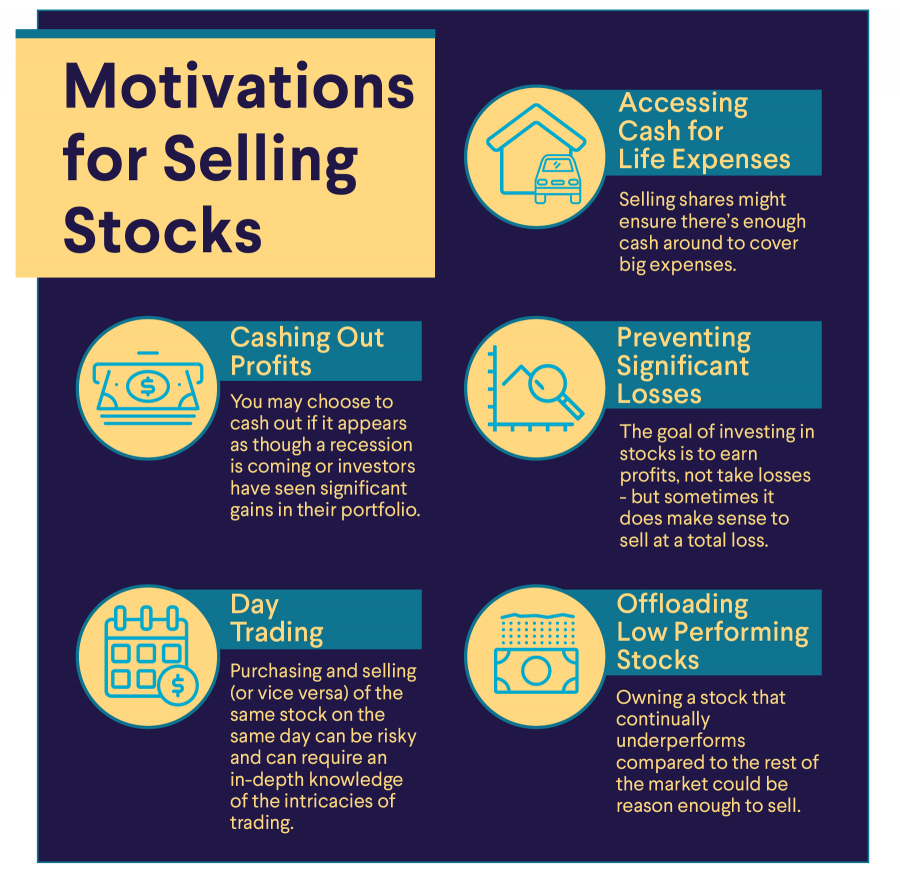Rate of Return (RoR): Formula and Calculation Examples
Calculating rate of return, as it relates to investing, is a way for investors or traders to get a sense of how much money they stand to gain or lose from their investments. It’s a relatively simple formula and calculation, and can help investors evaluate their overall performance in the markets. It does have some shortcomings, however, such as not accounting for the time value of money or the timing of cash flows. So, there are alternative calculations out there to help get even more accurate results.
Key Points
• The Rate of Return (RoR) measures an investment’s gain or loss as a percentage of its initial value over a specific period.
• Calculating RoR involves identifying the initial and end values, applying the formula, and can be done manually or using tools like Excel.
• RoR helps investors evaluate investment performance, compare different investments, and make informed decisions about resource allocation.
• Understanding RoR is crucial for assessing investment performance, aligning with financial goals, and determining market performance relative to other opportunities.
What Is Rate of Return?
Rate of return (RoR) is a measure of an investment’s gain or loss, expressed as a percentage of its initial value, over a given period of time. If calculated correctly, your rate of return will be expressed as a percentage of your initial investment. Positive rate of return calculations indicate a net gain on your investment, while negative results will indicate a loss.
Don’t confuse this with the expected rate of return, which forecasts your expected returns using probability and historical performance.
When using the rate of return formula, your chosen time period is referred to as your “holding period.” Regardless of whether your holding period lasts days, months, or even years. It’s important that you keep the time periods consistent when comparing investment performance.
How to Calculate Rate of Return
You can calculate the rate of return on your online investing or other type of investing activity by comparing the difference between its current value and its initial value, and then dividing the result by its initial value.
Multiplying the result of that rate of return formula by 100 will net you your rate of return as a percentage. You’ll know whether you made money on your investment depending on whether your result comes in as positive or negative.
Rate of Return Formula
The standard rate of return formula can be represented as follows:
R = [ ( Ve – Vb ) / Vb ] x 100
In this equation:
R = Rate of return
Ve = End of period value
Vb = Beginning of period value
The aforementioned formula can be applied to any holding period to find your rate of return “R” over that timespan.
“Ve,” your end of period value, should represent the value of your investment, including any interest or dividends earned over your holding period.
Finally “Vb” should represent the value of your initial investment. It will be used as the relative basis on which your investment returns are calculated.
Get up to $1,000 in stock when you fund a new Active Invest account.*
Access stock trading, options, alternative investments, IRAs, and more. Get started in just a few minutes.
Example of Calculating Rate of Return
To help you understand how to calculate the rate of return, we’ll walk you through an example. Again, here’s the formula:
R = [ ( Ve – Vb ) / Vb ] x 100
Let’s say an investor buys an investment for $125 a share which pays no dividends. This $125 investment will be your beginning of period value (“Vb”).
After one year, the value of the investment rises to $150 and the investor chooses to sell it. Given that $150 represents the value of the investment at the end of the holding period, $150 will be your end of period value (“Ve”).
To calculate the rate of return, enter the values for Vb and Ve into the rate of return formula. With the correct values in place, your equation should look like this:
R = [ ( $150 – $125 ) / $125 ] X 100
Solving out this formula using order of operations, your calculations should proceed as follows:
R = [ $25 / $125 ] X 100
R = 0.2 X 100
R = 20%
If done correctly, the formula should calculate a one year rate of return of 20%, based on the beginning and end of period values provided.
Considerations When Using Rate of Return
The main advantages of the rate of return calculation is that it’s simple and easy to calculate. It gives you a straightforward method to measure the profitability of an investment over any time period.
However, its simplicity does result in some shortcomings, particularly when it comes to more complex investments with numerous cash flows. We dive into these limitations below.
Recommended: What Is a Good Rate of Return?
What are the Limitations of Simple Rate of Return?
The main limitations of the simple rate of return calculation are that it ignores the time value of money and timing of cash flows.
The time value of money is an important concept when it comes to finance, as it explains that money today is always worth more than the same sum of money paid in the future. This is due to the inherent earnings potential of cash held now.
In tandem with the concept above, the simple rate of return calculation also fails to account for the timing of cash flows.
Cash flows are particularly important when dealing with more complex portfolios or investments that might have multiple reinvestment periods over time or multiple dividend payouts.
The simple rate of return calculation, in some ways, oversimplifies the rate of return into a simple accounting measure over an arbitrary amount of time. To address these shortcomings, professionals typically use alternate measures like internal rate of rate (IRR) and annualized rate of return.
Annualized Rate of Return Formula
The annualized rate of return is a slightly more complicated formula that solves the compatibility issues of the simple rate of return calculation by standardizing all calculations over an annual period.
The annualized rate of return formula can be exhibited as follows.
Ra = ( Ve / Vb ) 1 / n – 1 X 100
Where,
Ra = Annualized Rate of Return
Ve = End of period value
Vb = Beginning of period value
n = number of years in holding period
Annualized rate of return (Ra) standardizes your rate of return on an annual basis; this allows you to make fair comparisons with other annualized performance figures.
“Ve,” your end of period value, represents the value of your investment at the end of the holding period, including any interest or dividends earned.
“Vb” represents the value of your initial investment.
Other Types of Return Formulas
There are a multitude of other return metrics that can help you evaluate performance.
While the calculations for these metrics fall outside the scope of this reading, we touch on some of the most commonly used ones and why they’re used.
• Internal Rate of Return (IRR): This represents the expected annual compound growth rate of a specific investment and is usually used to help determine whether an investment is worthwhile.
• Return on Invested Capital (ROIC): Measures a firm’s profitability in relation to the total debt and equity invested by stakeholders.
• Return on Equity (ROE): Measures a firm’s net income in relation to the total value of its shareholder’s equity.
How Investors Can Use Rate of Return
Retail investors, institutional investors, and even corporate decision makers use the rate of return to gauge the performance of their investments over time. It’s useful when compared against a benchmark index, return expectations, or other investment options to gauge how your investment performed on a relative basis.
When comparing investment returns, it’s important to make sure you’re making fair comparisons to ensure you’re making apples-to-apples comparisons. For example, the S&P 500 might not serve as a fair benchmark for a portfolio invested 100% in international equities, as these are substantially different investment types. Benchmark comparisons give meaning to your rate of return and help you evaluate whether you’re outperforming on a relative basis.
Test your understanding of what you just read.
The Takeaway
Knowing how to calculate your rate of return gives you a useful tool for evaluating your investments’ performance. The best part about the rate of return calculation is that it can be done over almost any timespan, provided the returns you’re trying to compare have the same holding period.
Investors can calculate rate of return by hand, or by using an online spreadsheet. The same is true for annualized rate of return — which helps to standardize return rates over longer periods. Those are fairly simple ways to gauge investment returns, but there are a number of other metrics that help you assess and compare investment returns, so be sure to use the tool that aligns best with what you need to know.
Ready to invest in your goals? It’s easy to get started when you open an investment account with SoFi Invest. You can invest in stocks, exchange-traded funds (ETFs), mutual funds, alternative funds, and more. SoFi doesn’t charge commissions, but other fees apply (full fee disclosure here).
Photo credit: iStock/AleksandarNakic
SoFi Invest®
INVESTMENTS ARE NOT FDIC INSURED • ARE NOT BANK GUARANTEED • MAY LOSE VALUE
1) Automated Investing and advisory services are provided by SoFi Wealth LLC, an SEC-registered investment adviser (“SoFi Wealth“). Brokerage services are provided to SoFi Wealth LLC by SoFi Securities LLC.
2) Active Investing and brokerage services are provided by SoFi Securities LLC, Member FINRA (www.finra.org)/SIPC(www.sipc.org). Clearing and custody of all securities are provided by APEX Clearing Corporation.
For additional disclosures related to the SoFi Invest platforms described above please visit SoFi.com/legal.
Neither the Investment Advisor Representatives of SoFi Wealth, nor the Registered Representatives of SoFi Securities are compensated for the sale of any product or service sold through any SoFi Invest platform.
For a full listing of the fees associated with Sofi Invest please view our fee schedule.
Financial Tips & Strategies: The tips provided on this website are of a general nature and do not take into account your specific objectives, financial situation, and needs. You should always consider their appropriateness given your own circumstances.
Claw Promotion: Customer must fund their Active Invest account with at least $50 within 30 days of opening the account. Probability of customer receiving $1,000 is 0.028%. See full terms and conditions.
SOIN-Q424-013 Read more









